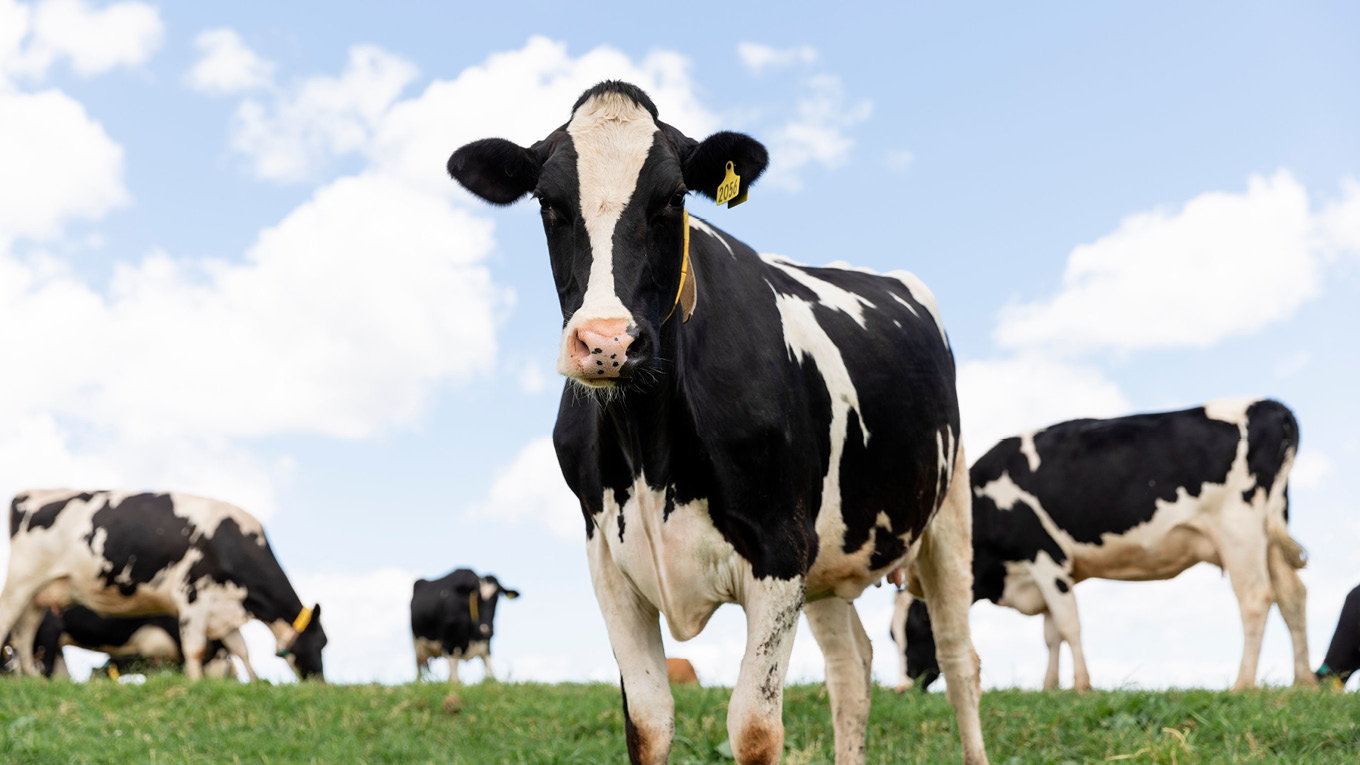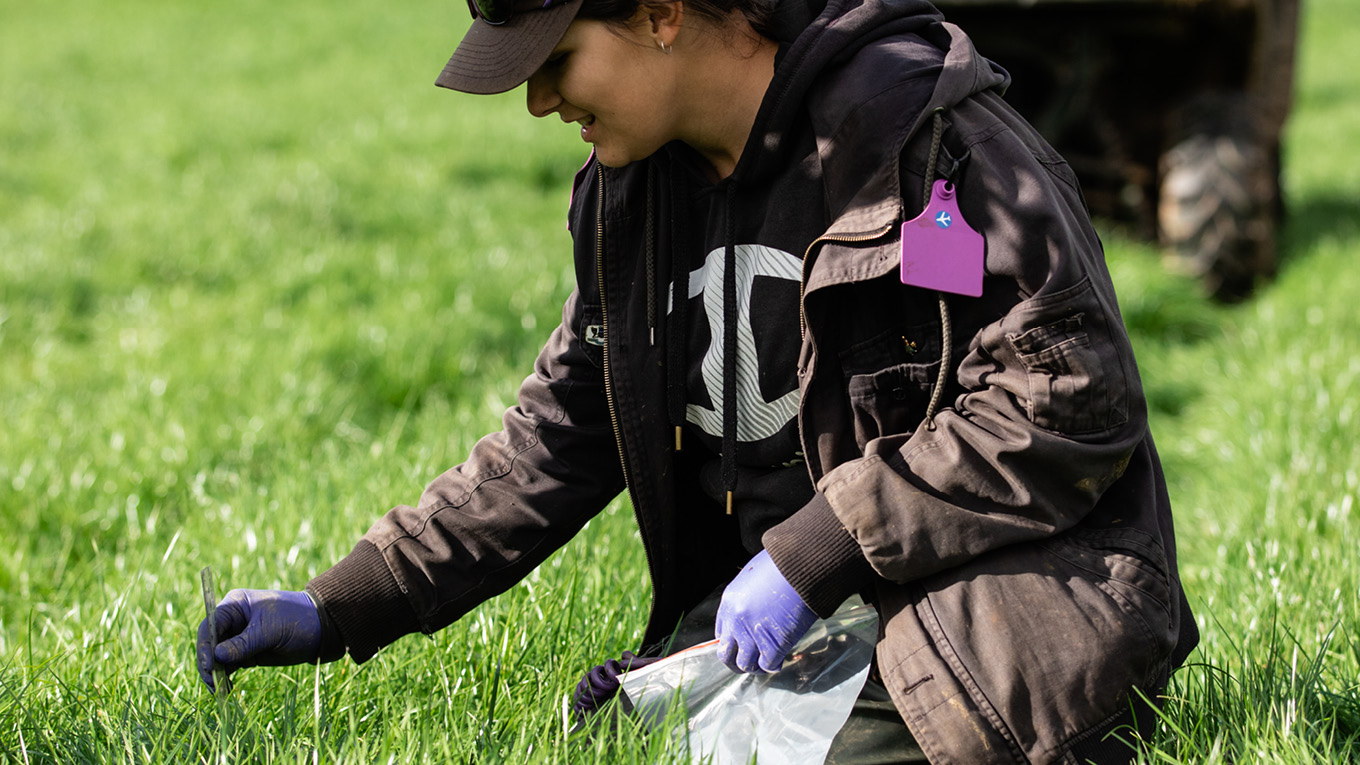Chicory
Chicory (Cichorium intybus) is a nutritious summer herb with the potential to provide good quality grazing feed for dairy herds in southern Australia.
It is a deep rooted, summer-active, short-term perennial herb with good nutritive characteristics. There has been renewed interest in chicory's potential to provide high-quality summer forage for grazing on southern Australian dairy farms.
Chicory has significant growth potential in late spring and summer, which can complement the seasonal production pattern of perennial ryegrass.
The dry matter (DM) percentage of chicory ranges from 10% to 15%, so yields can vary by up to 50% if DM is over or underestimated.
Estimating chicory yield
- Make a 0.25-square metre quadrant by bending wire into a 0.5-metre x 0.5m square.
- Take cuttings from four randomly chosen sites, cut to a five-centimetre height.
- Bulk up four samples and weigh.
- Multiply by 10,000 to get fresh weight (kilograms per hectare)
- Take a 200-gram sample of fresh chicory
- Dry in a microwave or oven and re-weigh, or send the sample away for DM analysis.
- Calculate DM percentage (dry weight/fresh weight).
- Calculate DM per hectare (fresh weight x DM%)
Summer cropping option
Chicory has reliable summer growth, even with low rainfall, due to its deep taproot system. It can be used as a one or two-year summer crop in a pasture renovation program or as a two to four-year perennial crop that can be oversown with cereals, annual or perennial grasses.
In this video, agronomist Damien Adcock and Dairy Australia's Ruairi McDonnell discuss the pros and cons of planting chicory.
Performance
Chicory has high nutritive characteristics when grazed. It can contain up to 12 megajoules of metabolisable energy per kilogram of DM and 25% crude protein. It provides high energy and protein during the summer months and can be grown on dryland or under irrigation.
Rotational grazing management is the preferred option and therefore chicory fits in well with pasture-based feeding systems.
Agronomy
Chicory can be sown in early spring in areas with a longer growing season, or in autumn. It is adapted to a wide variety of climates and soil types. It will grow in summer dominant and winter dominant rainfall areas with annual rainfalls between 400 millimetres and 800mm. Chicory can be sown on heavier soil types and will tolerate soil pH ranging from 4.8 to 6.5.
The sowing rate of chicory is determined by its use. As a single crop, the sowing rate for chicory could be between four and six kilograms per hectare. The sowing rate will be lower than this when combined with other species. Agronomists will be able to provide advice on the variety and sowing rate that will best suit the situation. Chicory can be sown into a cultivated seed bed or direct drilled, but no deeper than 10mm.
Soil temperature needs to be greater than 10 degrees Celsius for a successful establishment.
Phosphorus, sulphur and nitrogen are important to optimise the growth of chicory. Chicory can also be sensitive to low boron.
Red legged earth mites, lucerne fleas and slugs can be major pests during the establishment phase of chicory, so crops should be closely monitored for these pests.
Grass weeds in chicory can be controlled with selective herbicides. If sowing into a prepared seedbed, the soil disturbance will allow the emergence of new weeds. In this case, broadleaf weeds should be allowed to germinate and emerge. They should be controlled before or at the same time as the chicory is sown.
Management
Grazing frequency and intensity guidelines should be strictly observed to optimise DM yield, nutritive characteristics and persistence, particularly beyond the second year. Maintaining a plant height of between 5cm and 40cm will assist persistence.
Persistence of chicory is largely dependent on survival of the original plants. However, about 30% of the original plants are expected to be lost each year. Although seed production can occur after the first year of the crop, new seedlings from natural re-seeding do not always survive grazing, probably due to trampling of the fragile seedlings.
There are no major risks to animal health from chicory at normal feeding rates of less than 50% of the diet. Greater than this, some varieties may cause milk taint.
More information is available in the Chicory fact sheet.
Further information is available on the Chicory fact sheet produced as part of the 3030 Project. This fact sheet includes the practical aspects of chicory management and summarises 3030 Project findings on potential production, seasonality, grazing management, agronomic requirements and potential system fit of chicory.


